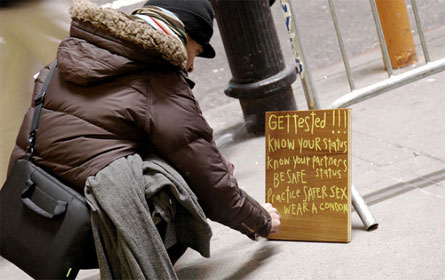30 Years of Fighting AIDS: Much Progress, Many Losses
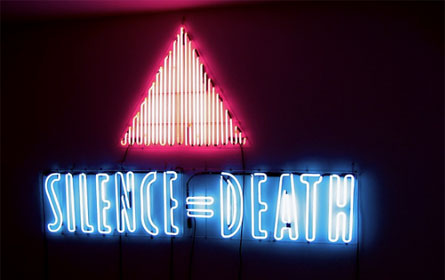
Part one of two. For part two, go here.
In 1984, when Jim lost his 22-year old boyfriend to AIDS, he didn't think he would live to see 30. When he was diagnosed with HIV himself five years later, Jim never expected to turn 40. He had stopped counting how many friends had died when that number reached 200.
The medication available at the time, AZT, was supposed to be taken three times daily, but Jim could not handle even a portion of that dose without getting sick. So he put off treatment until 1997. By then Jim's T cell count was below 200, the demarcation for HIV turning into AIDS. Fortunately, antiretroviral medications -- much more powerful drugs with fewer side effects -- were just being approved, and Jim's reaction to them was quite good. His T cell count soon rose to 350.
Today, 21 years after being diagnosed with HIV, Jim, at 57, is still with us, and his outlook for the future is much improved.
Jim is not alone. Like Jim, Keith (not his real name), who was diagnosed with HIV in 1994 at age 29, also never thought he’d still be here.
"There's a lot of us," Keith said. "I think something else will kill me before HIV. I know people who are still alive who have had the illness now for 20 to 25 years and longer, from the 1980s. … It's not on my radar to die from HIV any longer."
More than 30 years after the first known death from AIDS in New York City – and on the eve of World AIDS Day – much has changed since the epidemic ripped through the city in the 1980s. Major advances have been made in treating HIV and AIDS, and social service agencies have stepped in to meet the needs of many HIV positive people who need help.
Yet challenges remain. Every year some 1,000 New Yorkers still are diagnosed with HIV so late it has already become AIDS. Many others go untested –- and undetected. And the city must now deal with a population many thought it would never have to serve: aging people with HIV/AIDS.
By 2015, over half of people in the United States living with HIV will be over the age of 50. In New York City, almost 40 percent of the estimated 107,000 New Yorkers living with an HIV/AIDS diagnosis are over age 50, and 75 percent over 40.
Their longevity is testimony to the success of what has been done to combat HIV/AIDS. Living with HIV into middle age and beyond, though, presents another set of issues: medical, financial, social and personal.
Knowing Helps
Youth, particularly young men having sex with men, are still seriously at risk for new infections. Even though, overall, new HIV diagnoses in the city have decreased, they continue to rise among the young, particularly young gay and bisexual men. And African American men, ages 13 to 29, experienced the greatest increase in new infections in 2009: 48 percent.
Knowing your HIV status and, if you are HIV-positive, getting access to the life-saving drugs are prerequisites for survival. With that in mind, the city and state have taken steps to tell people about the tests and increase their availability.
"Once people become aware of their HIV-positive status," Rod McCullom wrote for the Black Aids Institute, "not only are they more likely to take steps such as using condoms to avoid infecting their sexual partners, but research now shows that beginning treatment soon after diagnosis makes people with HIV/AIDS significantly less infectious."
Last year, New York state passed a law requiring that HIV testing be offered to people aged 13 to 64 in primary care, hospitals or emergency rooms. Patients can refuse the test. The city now mandates sex education classes in public schools for middle and high school students that will include curriculum about unprotected sex and how to use condoms.
And the city health department has come out with a graphic public service announcement, “It's Never Just HIV," illustrating the other medical problems that often accompany HIV in an attempt to curb complacency and urge viewers to use condoms.
Reducing Risks
Over the years, targeted programs have helped drive down new infections among at risk groups.
Intravenous drug use -- once a major means of transmission of HIV in the city -- has been reduced to 4.4 percent of new HIV diagnoses owing largely to syringe exchange programs that allow adults to purchase up to 10 needles without a prescription from a pharmacy or to obtain them from registered health care facilities. The state also recently changed its penal law so that possession of a residual amount of a controlled substance in or on a syringe is no longer a crime, although there are still reports of police harassment around needle exchange programs. Advocates would like to see more efforts to train police on the benefits of needle exchange.
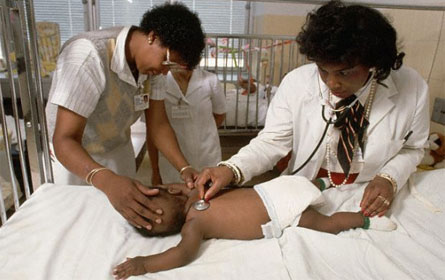
Mother-to-baby transmission has been virtually eliminated in New York state by mandatory testing of all babies born, if the pregnant mother has declined a test, followed by immediate treatment — which can expel the virus in two-thirds of the infants — when HIV is present.
But while the youngest New Yorkers get tested, older ones frequently do not. This is true even though people over 50 account for 17 percent of the new diagnoses of HIV in New York.
African Americans over 50 are 12 times as likely as their white peers to contract HIV, and Latinos are five times as likely, according to a Centers for Disease Control publication. African American women over the age of 50 make up 65 percent of all women with HIV and 67 percent of new diagnoses among women in New York City. Three quarters of these woman report unprotected heterosexual sex as the means of transmission.
In December 2009, the federal government announced that Medicare will now cover HIV screening tests for people over 65.
Every step forward, however, highlights the gaps left behind. For example, the Centers for Disease Control issued a recommendation that all people aged 13 to 64 year get annual HIV tests . “Great!” said Nathan Schaefer, director of public policy at the Gay Men's Health Crisis. But, he added, the government should recommend HIV tests for all ages, particularly in light of Medicare's decision to make HIV testing available to those over 65.
The lack of tests speaks partly to the common assumption that seniors do not have sex, even though a 1998 study by the National Council on Aging found that 61 percent of men and 37 percent of women over 60 were still sexually active. Those numbers probably have increased with the erectile–dysfunction pills now available.
Adults over 50 at risk for HIV were 80 percent less likely to be tested as at-risk adults 20 to 30 years of age, according to one study.
Doctors may not ask their older patients if they are sexually active. Men over 50 who are having sex with other men, afraid of anti-gay bias, may not disclose this to their doctor. Women who have entered menopause, no longer concerned about pregnancy, often will not use protection and will seldom discuss this with a health-care provider.
Older people's symptoms of HIV/AIDS were also frequently misdiagnosed as other illnesses. "Sometimes the effects of HIV among older adults, such as fatigue and cognition loss, are perceived to be just part of aging process," said Schaefer.
Because many older adults are not tested they may only discover they have HIV while being treated for other conditions. Frequently, this is long after they contracted the illness, so it has progressed to AIDS and likely been transmitted to others.
"The CDC really needs to develop a preventive program targeted for older adults," said Schaefer. "Current CDC models for prevention for high risk populations do not include seniors. These models … have been demonstrated to be efficacious and are used to shape new prevention programs. But not one has been designed for older adults."
After the Test
Testing enables people to get help sooner, increasing their chances of survival. But many need government assistance as well.
Ethan (not his real name) was diagnosed with HIV in 2005, at age 56. He is 62 now. "At first my T cell count was very high. I was still healthy from a statistical point of view. So I was able to distance myself. Yeah, I got it, but I don’t need medication. And that was a source of pride," he said.
He delayed going on the drugs, but, he continued, "Every time I had blood work done, my T cell count was going down. … I was very weak. I realized it finally became time to go on the medications."
When Ethan handed the prescription to the pharmacist, he was told that his insurance company was not going to pay for it. “The pharmacist told me I had $1,000 annual limit on medication. Just one of the medications the doctor was prescribing, to keep me from getting pneumonia, would cost $3,000 a month.
Fortunately, Ethan's doctor figured out that Ethan would qualify for AIDS Drug Assistance Programs or ADAP. As a result, Ethan said, "I finally got on the medications and I got stronger."
ADAP is one of the many programs established in the last 30 years to assist people with HIV/AIDS. New York, more than many other states, does try to provide some kind of a safety net to people with the virus.
"We're fortunate to live in a state that is so dedicated to good health care," said GMHC's Schaefer. With states across the country cutting their budgets, Schaefer said, "a lot of states are experiencing more need than they are able to meet" and have waiting lists for medications. These states, according to Schaefer, "are not able to put up the money to make the required dollar match to pull down the maximum amount of federal reserves. But New York does."
The help extends beyond medication. Once Keith began treatment, he never had a problem getting services and help in the city. After he was laid off from his job, he applied for public assistance through the HIV/AIDS Services Administration, or HASA, an organization that helps folks diagnosed with AIDS or symptomatic HIV find emergency housing, financial assistance, medical care and other services.
"New York state is really great," said Keith. "I thought for years about moving away, for various reasons, but because of the care here -- my doctor, the medications, the services -- I won't." He said he also has gotten " wonderful support" from three nonprofits: GMHC, Friends in Deed, a support organization for people affected by life-threatening illness; and the New York Buyers Club for nutritional supplements.
Still in Need
But not everyone in New York has thrived. HIV related illness is the number one cause of death for women in New York City’s shelter system, according to a 2005 reportfrom the city health department and the Department of Homeless Services.
"Affordable and stable housing is a serious priority for people living with HIV," said Schaefer. "Studies show that if someone is permanently housed, the outcome is better in every way. "
With housing costs so high in New York, finding that stable situation can pose a challenge.
The neighborhood you live in also may put you at risk. People living in neighborhoods with high rates of poverty, substance abuse and sexually transmitted disease. as well as a prevalence of HIV and low rates of testing, are at high risk for HIV infection. These neighborhoods include Central Brooklyn, Harlem, the South Bronx, Hell’s Kitchen, the West Village and Chelsea. All except Chelsea also have high death rates associated with AIDS. Lower income communities face higher death rates than other areas with similar HIV prevalence.
Part one of two. For part two on aging with HIV and budget challenges, go here.
Aging with HIV: A Triumph with Challenges
Part two of two. For part one on advances in treatment and the changing face of people with HIV and AIDS, go here.
Complicating the situation is the current recession. Funding cuts to programs that support people living with HIV are in the latest New York City budget, including a $1.3 million cut in the HIV/AIDS Services Administration's rent assistance program,. The city also cut HIV prevention and health literacy for seniors, HIV/AIDS Communities of Color and money for the Injection Drug Users Health Alliance.
The New York state budget has instituted a ceiling on payments to Certified Home Health Care Agencies that serve people with special needs, including those with HIV/AIDS. The budget also includes a cap on the Medicaid pharmacy benefit and a policy change that gives the state authority to deny coverage on certain drugs.
Just this month, the federal government reduced the Housing Opportunities for Persons With Aids program by $2 million and, as Congress has yet to pass a budget that would reauthorize funding for the AIDS Drug Assistance Programs.
Aging with AIDS
The cuts come as agencies confront the rise of HIV/AIDs among the elderly and soon to-be elderly.
Comorbidity -- other illnesses surfacing and existing simultaneously with HIV/AIDS -- is common for someone living with HIV, either as a result of the weakened immune system or as a side effect of the antiretroviral mediations. Heart disease, osteoporosis, diabetes and cognitive dysfunction are some of the conditions that can surface. Depression is twice as common among people living with HIV, particularly older adults, than with the general public, as is a higher incidence of substance abuse.
Nausea, diarrhea, fatigue, lipodystrophy (a redistribution of fat in the body), elevated cholesterol levels, neuropathy and kidney disease can all be side effects of the medication.
"Is it HIV or is it aging?" James Masten asks in his recently published book Aging with HIV: A Gay Man’s Guide. The answer is not always evident and may require research and reflection.
Masten also addresses the "triple threat" that gay men over 50 who are living with HIV have to face: homophobia, HIV/AIDS and ageism. There is stigma at every turn.
Aging means changing, said Masten, and adapting to those changes is key, along with self-care and reestablishing a network of friendship and community. Embrace life, he counsels, and keep it simple.
Schaefer highlighted a number of recent successes for folks aging with H.I.V., including City Council support for sensitivity training for health and human service providers, and for senior center leadership staff, to counteract stigma and discrimination . The city also awarded SAGE (Services and Advocacy for GLBT Elders) a contract to open the first lesbian and gay senior center in New York starting in January 2012.
HIV/AIDS at 30: Grieving and Moving Forward
"The fact that we are dealing with H.I.V. and aging issues is a huge advancement in itself," said Schaefer. “Twenty years ago we weren’t speaking of living with HIV in people 50, 60 and 70."
As Masten writes in his book, “The 1980s and 1990s were a holocaust for gay men."
The tragedy of those years still deeply affects those who lived through it.
Unacknowledged emotions -- such as grief, stigma, survivor's guilt and shame --are barriers to optimal aging with HIV," said Masten. "They prevent the adaptation of self-care strategies and aid in the creation of a shrinking life." Optimal aging, Masten suggests, involves rediscovering how you want to live your life.
For Jim, pleasure comes from being an activist. "I'm a late bloomer in terms of doing advocacy, putting in that effort, meeting with politicians," he said. "Even if every campaign is not a success, being able to expend my energy in that way instead of becoming depressed and escaping by diving into some type of addiction -- which will just kill you faster -- makes me feel like I have some control and that I'm contributing to what will be a positive outcome."
The day he was diagnosed with HV, Ethan had an insight that there would be love and support for him as he walked through this. Going forward into his future, he finds the issue is often, "Can I accept that love and support?"
Keith enjoys his 14-year-old poodle, his family and friends, and volunteering at a meditation center. And, he said, "not a day goes by where I don't have gratitude, for everything in my life, but especially just to still be alive. Every moment, whether great or difficult, I am just content to still be able to experience. It really can't get any better."
Top Hospitals Offer Separate and Unequal Care
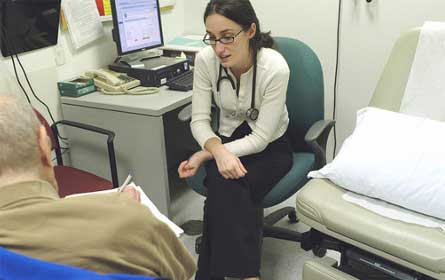
By almost any measure, people of color suffer worse health outcomes than their white counterparts. The contributing factors vary, ranging from lack of access to healthy food to taking fewer preventative health measures.
On Tuesday, the New York State Medicaid Redesign Team voted on a slate of proposals to reduce disparities in healthcare in the state. One of them attempts to tackle the thorny problem of separate and unequal access to health care for people on Medicaid at some of New York's most elite private hospitals -- a problem we call "segregated care."
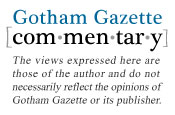
In New York City, the type of specialty outpatient care a person receives is often dictated by how they pay for that care Private academic medical centers, also known as teaching hospitals, are partly to blame for this.
People who have private insurance go into one system. Those with no insurance or with public insurance such as Medicaid go into another. Because African-Americans and Hispanics in New York City are more than twice as likely as whites to be publicly insured or uninsured, patient steering by insurance status disproportionately hurts people of color. Whether intended or not, this two-tiered system amounts to racial discrimination.
New York State Sen. Gustavo Rivera and Assemblymember Nelson Castro, both of the Bronx, have introduced legislation that gives New York the chance to right this wrong and make health equality a reality. The proposal voted on by the redesign team is based on this legislation. Together, these measures could substantially improve access to health care for millions of New Yorkers.
The Second Tier
In New York City, private academic medical centers, which unlike community or public hospitals also run their own medical schools, operate a two-tiered system. Privately insured patients are seen in faculty practices, while those on Medicaid or uninsured are seen in outpatient clinics. (Because public hospitals largely cater to Medicaid or uninsured patients, segregated care is a non-existent issue in these institutions.)
Worse still, the academic medical centers do not ensure that Medicaid patients seen in the clinic have access to the same services or quality of care as privately insured patients. In the clinic system, patients are usually treated by residents on a rotating schedule. This makes continuity of care, which is linked to reduced hospitalization and earlier identification of chronic disease, difficult. Other issues, such as long waiting times for appointments, limited coordination between specialists and primary care doctors, and lack of night or weekend coverage, continue to plague the clinic system and the patients who shuffle through it.
To document this segregation, Bronx Health REACH conducted two telephone surveys of several major hospitals in New York City. The callers phoned four different specialty departments (cardiology, endocrinology, ophthalmology, and nephrology) to try to make an appointment for a relative. In almost every instance, the first question the caller was asked was what insurance their relative had. If the answer was private insurance, the caller was always referred to a private practice. Callers who stated their relative had Medicaid or no insurance were almost always referred to the clinic system.
Bronx Health REACH and New York Lawyers for the Public Interest have been fighting to end segregated care for over a decade. Other avenues, including a civil rights complaint filed in 2008 with the New York state attorney general, have not proved successful.
The introduction of the legislation in June by Rivera and Castro in both houses of the legislature is a major step forward. The statewide bill would prohibit steering of patients into different care settings based on insurance type and instead require that patients be treated by integrated care teams. It would also mandate that hospitals inform patients of financial assistance programs and require that academic medical centers negotiate with Medicaid managed care plans so that all providers are eligible to treat Medicaid patients.
"In New York state, we have the opportunity to go a step further than the national health care legislation requires by addressing health inequities that exist based on an individual's ability to purchase quality healthcare insurance," Rivera said. He said the bill, which Bronx Health REACH helped initiate, "will further chip away at policies that create health disparities along class lines, and will work toward ensuring that quality healthcare be a basic right for all New Yorkers."
Separate and Not Equal
Though our phone surveys determined that private hospitals do separate patients based on insurance status, hospitals have argued that separate doesn't necessarily mean unequal. In meetings with hospital administrators over the years, Bronx Health REACH and attorneys from New York Lawyers for the Public Interest have received a number of vague responses about why the two-tiered system continues to persist.
Administrators have said that this is how it has always been done. Some administrators, and even some doctors, have implied that the clinic patients should be grateful for what care they do get.
Hospitals also have cited financial considerations, arguing that Medicaid does not reimburse enough for visits to private doctors' offices. This may be true, but it's not the whole truth. Medicaid reimburses at a higher rate for a patient seen in a clinic than at a private doctor’s office. If a faculty or attending physician saw patients in a clinic setting, they would receive the higher rate and the patient would get the high quality care afforded to privately insured patients.
The Effect on Patients
Bronx Health REACH's work in underserved communities throughout New York City has uncovered countless stories of unequal treatment in outpatient clinics.
Vanessa Ghigliotty was a 27-year-old single mother from the Bronx when she went to the doctor in May 2001 to find out why she was always tired. As a Medicaid beneficiary, she went to her usual place of care, a hospital clinic. The doctor told her that she had been working too hard and advised her to take it easy for the summer.
The summer passed, and Ghigliotty still felt incredibly fatigued. Meanwhile, a growth that hurt to touch had formed on the right side of her stomach. In October, she went back to the same clinic and saw a different doctor, who rather than running any tests, told her she needed to eat more roughage and lose weight. He attributed the bulge to gas, even though Ghigliotty told him she was concerned because it was rock hard and very tender. The doctor dismissed her concerns and suggested she pick up a new hobby and find a boyfriend.
By April 2002, Ghigliotty could no longer walk. Though in constant pain, she was terrified to go back to the clinic and receive the same dismissive treatment. Her parents finally convinced her to go to the emergency room, where she learned she had Stage 4 colon cancer. Eventually, Ghigliotty got treatment for her advanced cancer at Memorial Sloan-Kettering and underwent four and a half years of chemotherapy and seven surgeries.
"When I first went to the doctor, I probably had Stage 2 cancer, but then I had to wait almost a year and it was everywhere," she said. "I think that's what the problem is in clinics. You get largely ignored until you can't ignore it anymore, until it's impossible to ignore."
For Gary Spears, a pastor from the Bronx, a small cut on his finger turned into a massive infection. Concerned, Spears went to the emergency room, which referred him to the hospital's outpatient clinic. They sent him home with some Tylenol and a bandage. The infection continued to get worse, and Spears kept returning to the clinic, where he saw a different doctor each visit.
At the time, the reverend had experienced rapid weight loss and was constantly tired, had trouble eating and needed to go to the bathroom frequently. Despite these all being signs of diabetes, especially in people who are overweight, the medical staff never gave Spears a blood test to determine if his glucose levels were too high.
Luckily, at his church Spears met a doctor, who noticed his bandaged hand and made him an appointment for the next day. Spears got a finger stick and found out he was a diabetic and at risk for amputation. Through proper intervention and treatment, Spears was able to keep his finger and get his diabetes under control.
"Every time I went for a follow-up, or to let them know how I was doing, I saw a different doctor. And that doctor appeared not to be looking at the charts until he got into the room," said Spears. "I felt I wasn’t being cared for, and I was wasting my time. I was waiting for long periods of time to be seen, and then I was not getting treated like an individual."
One System for All Patients
Integrated specialty care systems are not a radical pipe dream. At academic medical centers in other areas of the country, including at Massachusetts General Hospital in Boston, the same doctors see all patients, regardless of insurance, in the same place. This integrated approach is not only equitable, but it does away with a wasteful system where hospitals operate two specialty-care practices under the same roof.
In addition, under the Hill-Burton act and other laws, academic medical centers, which receive millions of dollars in federal and state funding, must make their services available without discrimination, especially to recipients of Medicaid. Instead, by providing a separate system of care with poor access to specialty services, these hospitals are practicing blatant discrimination against a population that is largely low-income and racially and ethnically diverse. The failure of academic medical centers to participate in many of the Medicaid managed care plans available in New York, despite the fact that 90 percent of Medicaid recipients in the state are mandated to participate in managed care, further discriminates against this underserved population.
The medical community does have guidelines that address these concerns explicitly. The New York State Patients’ Bill of Rights states that patients have a right to "receive treatment without discrimination as to race, color, religion, sex, national origin, disability, sexual orientation, source of payment, or age." (Italics added.)
The New York State Department of Health has also issued guidelines for medical residents as specialty-care providers for Medicaid managed care patients. These guidelines require that patients be given the name of the attending physician in writing, even if they are seen by a resident. All patients have a right to be cared for directly by the attending physician if they request it. The guidelines also require that Medicaid enrollees in specialty outpatient clinics be cared for in a setting that allows for continuity of care and have the ability to make follow-up appointments with a particular resident or attending physician. In addition, the guidelines state that training sites must integrate the care of Medicaid, uninsured and private patients in the same settings. While these guidelines are in place, they are not enforceable nor have they been followed.
The Health Equity Bill now in the legislature, and the Medicaid Redesign Team proposal going before Gov. Andrew Cuomo for possible inclusion in his budget, would eliminate the separate and unequal system of care in favor of an integrated system that delivers the highest quality of care to all patients, not just those with private insurance. Without it, the New York City private teaching hospital system, considered by many to be one of the best in the world, will continue to cater to the white and affluent, leaving the publicly insured and uninsured to manage high need chronic conditions without quality medical care. We can do better.
Charmaine Ruddock is project director of Bronx Health REACH, community coalition funded by the Centers for Disease Control and Prevention and dedicated to the elimination of racial and ethnic health disparities.
